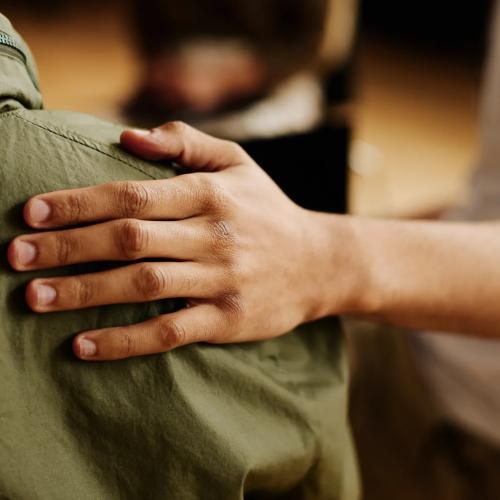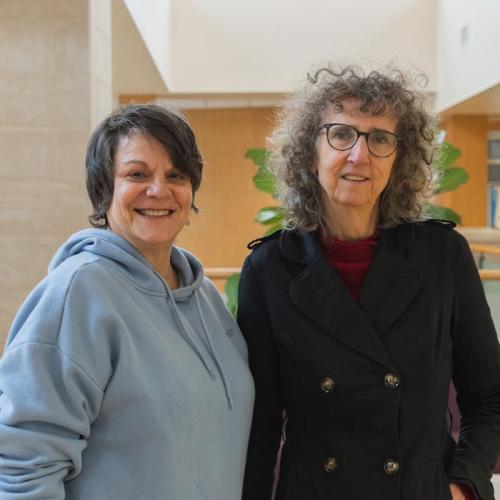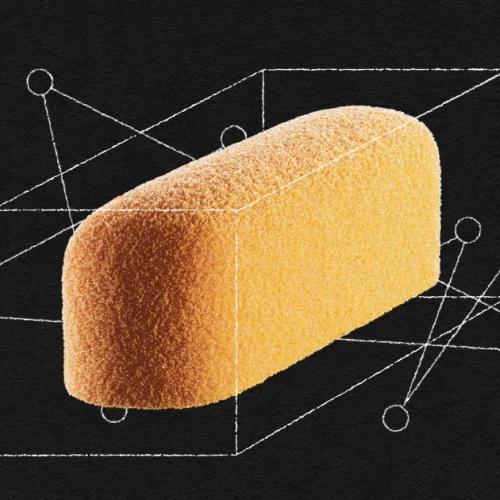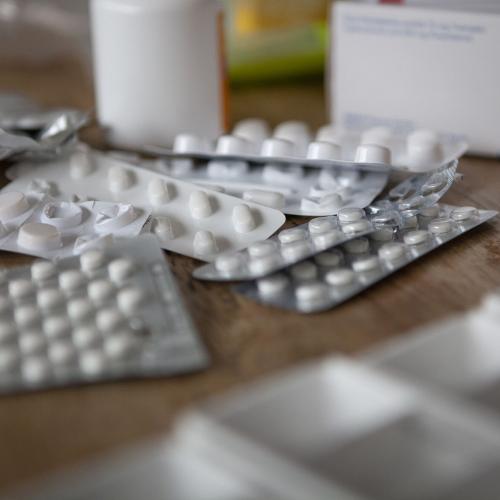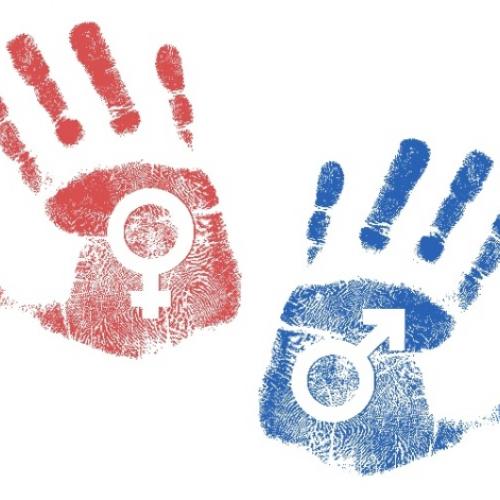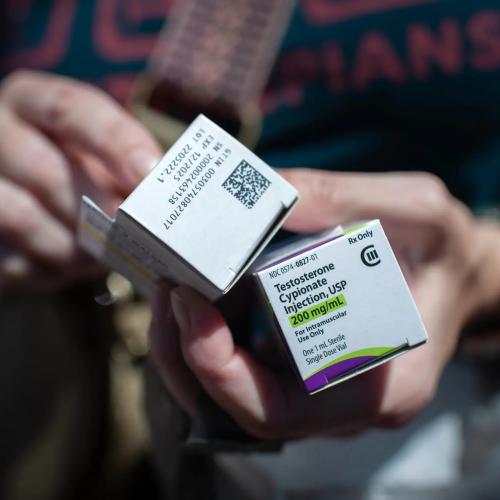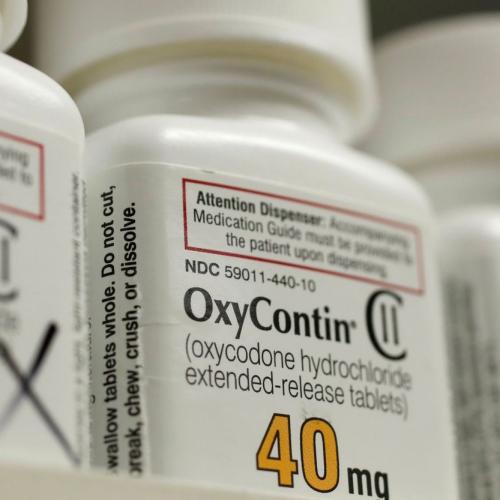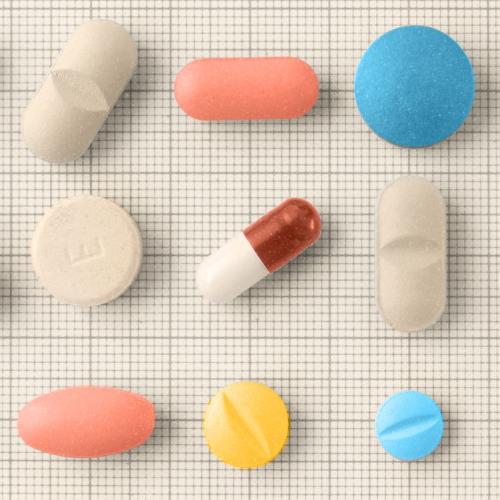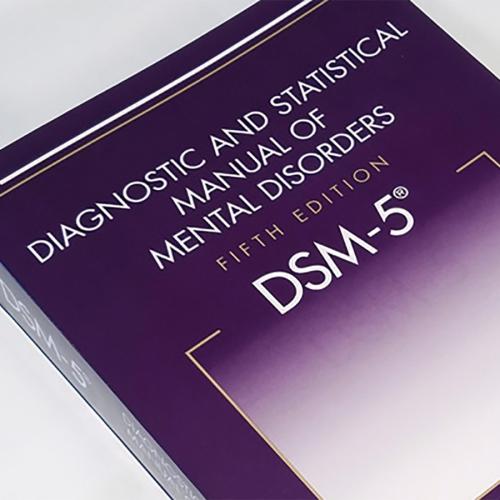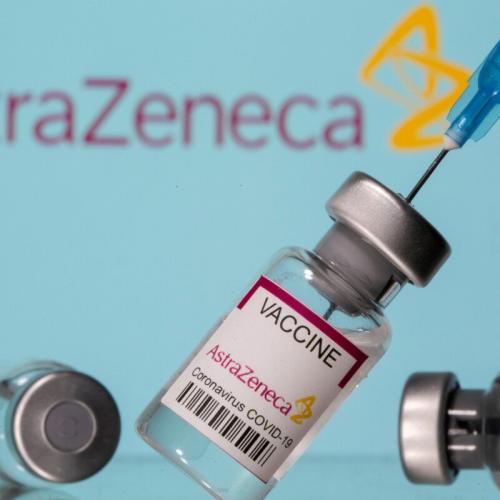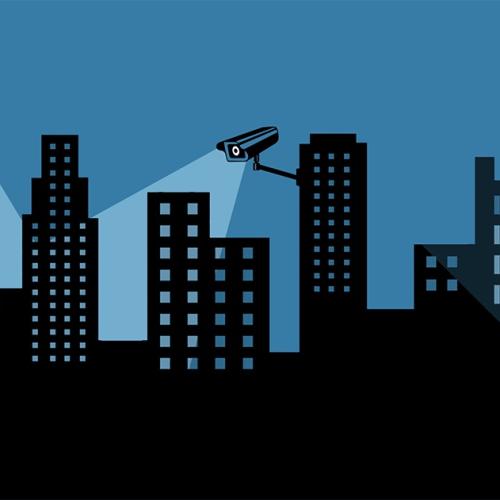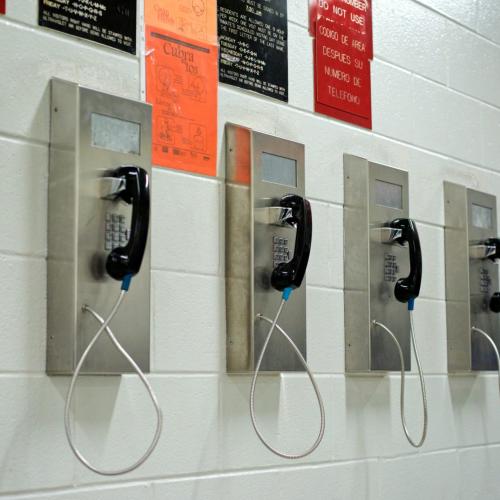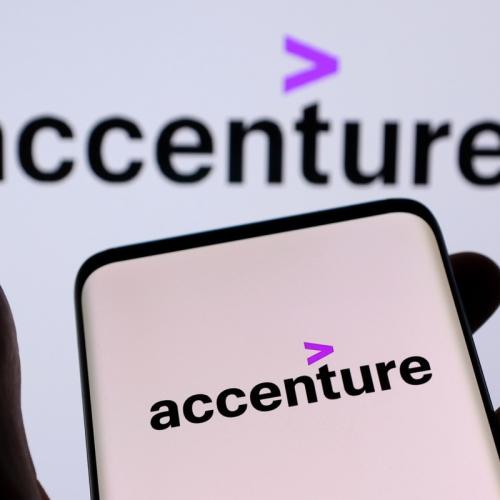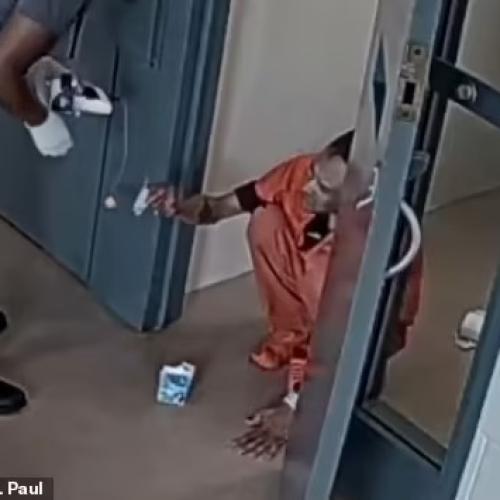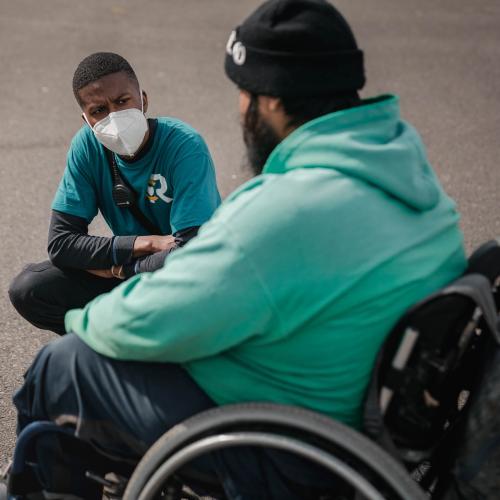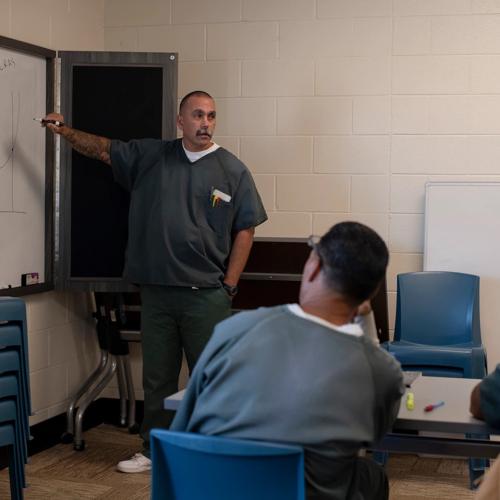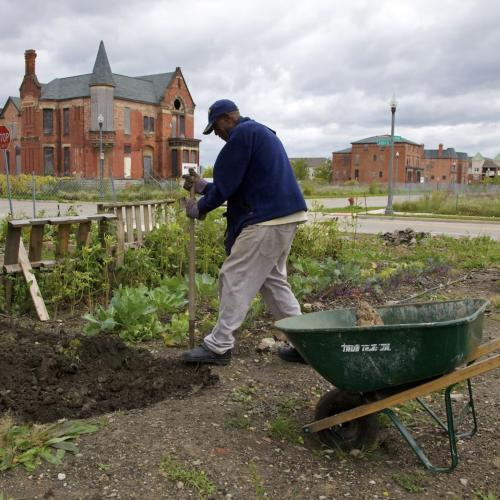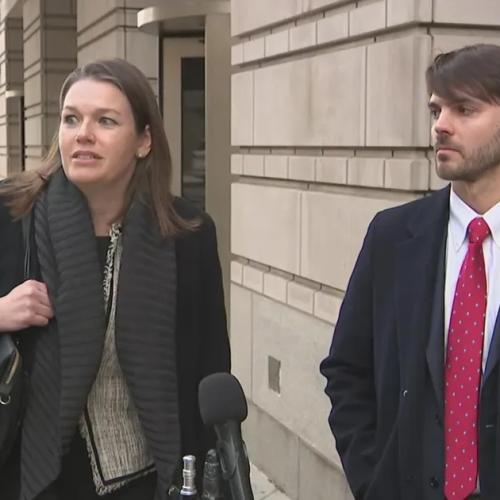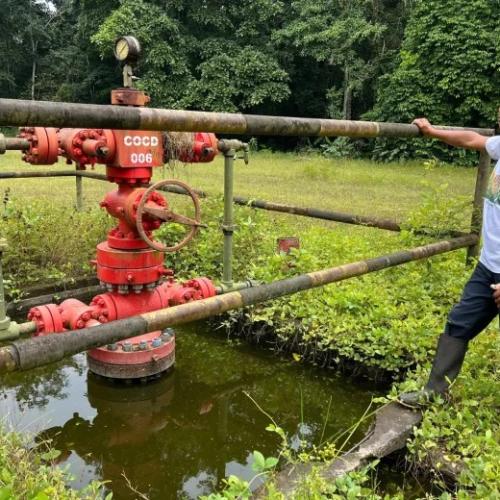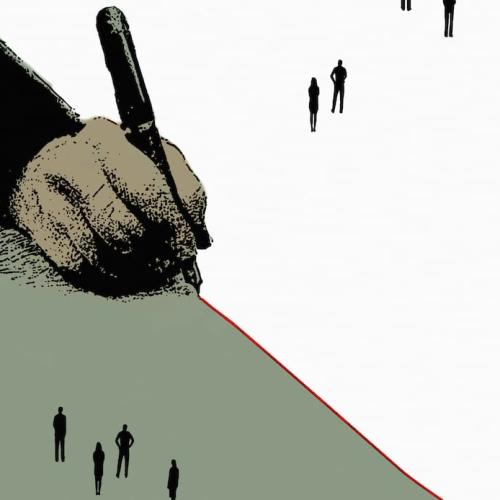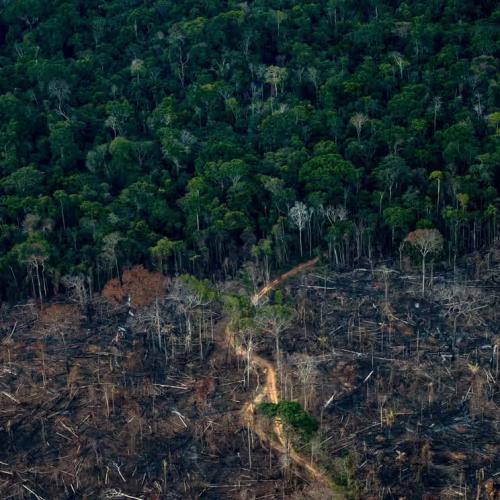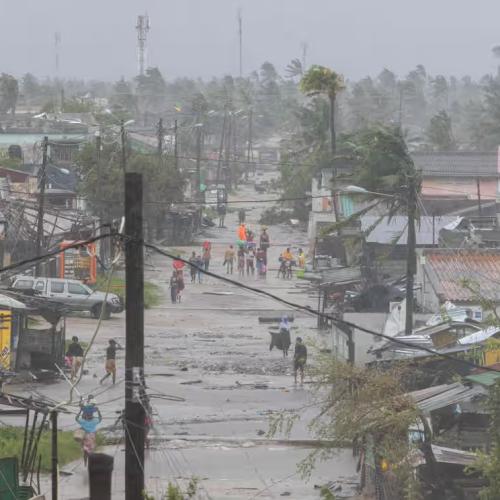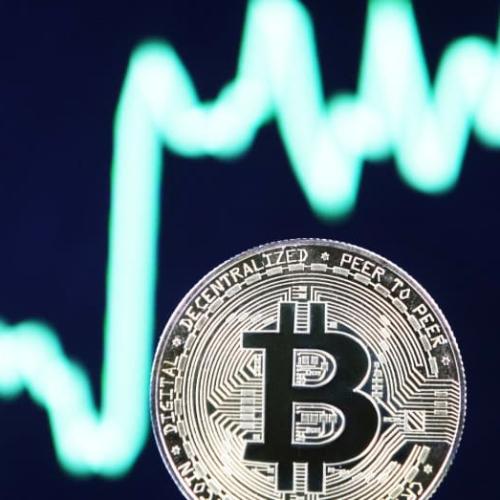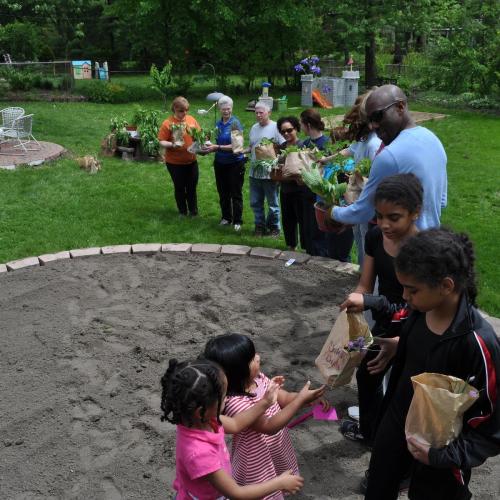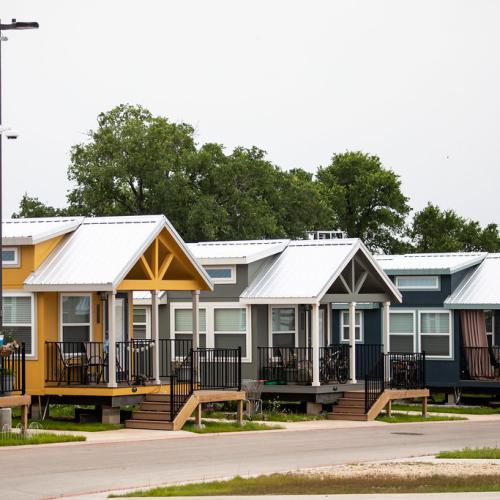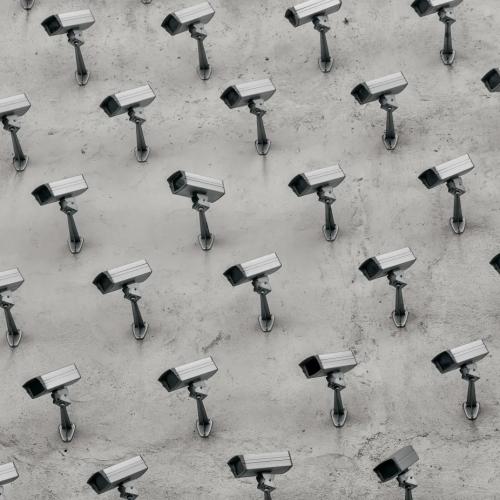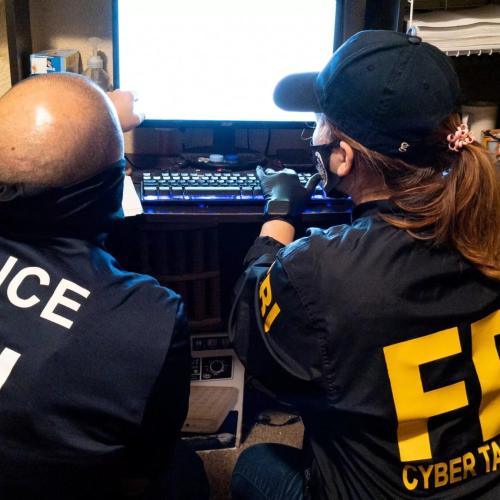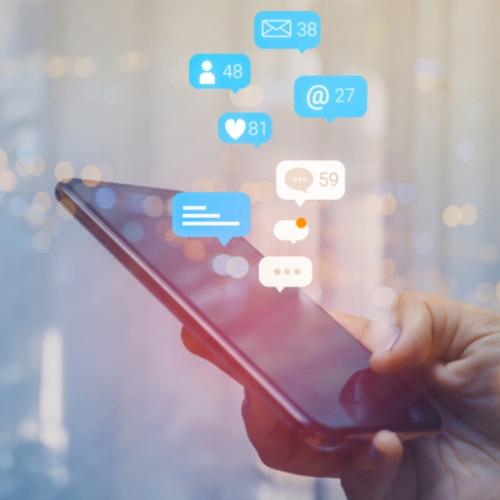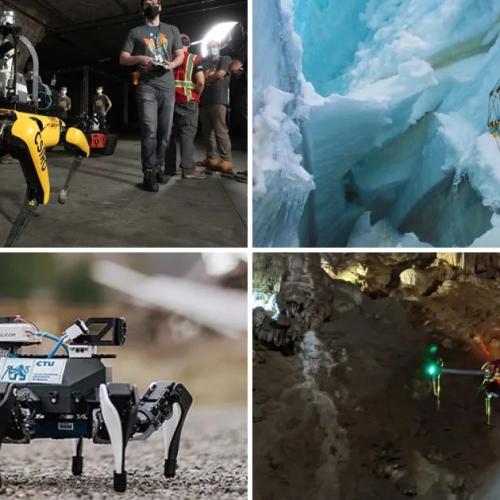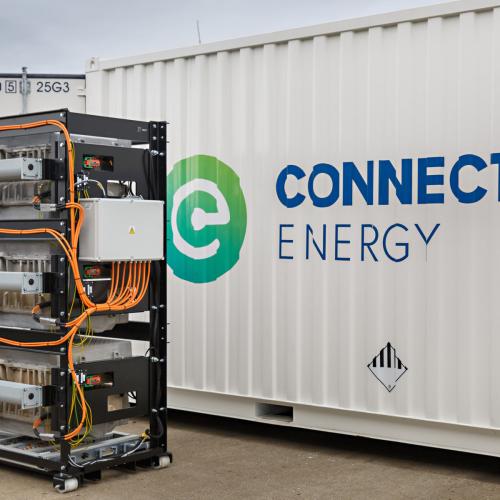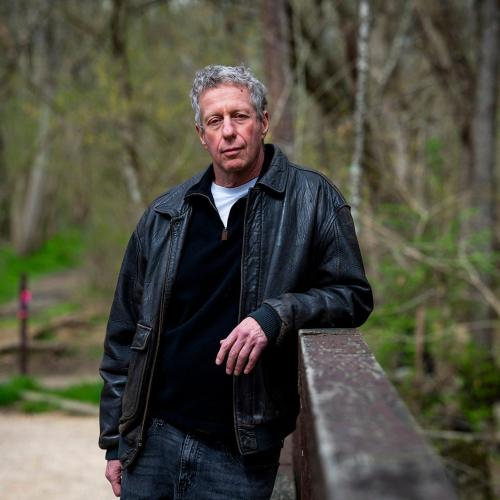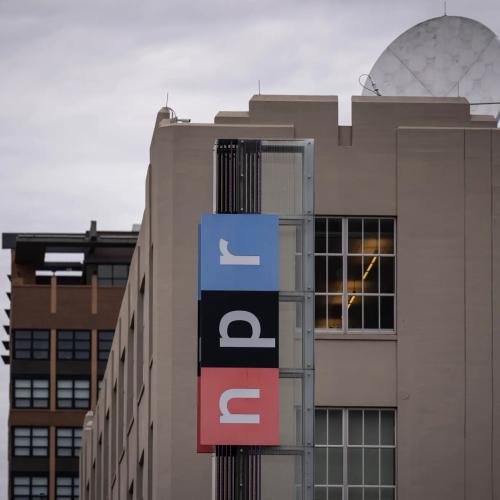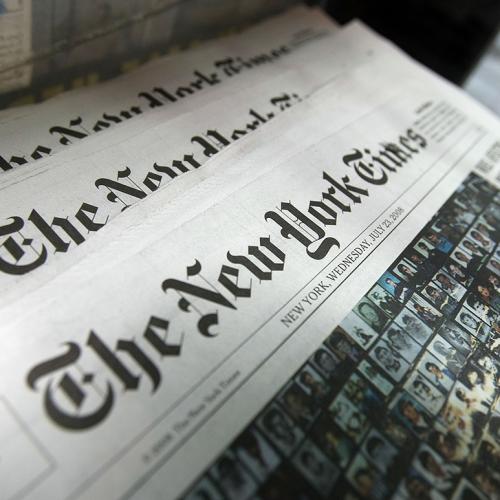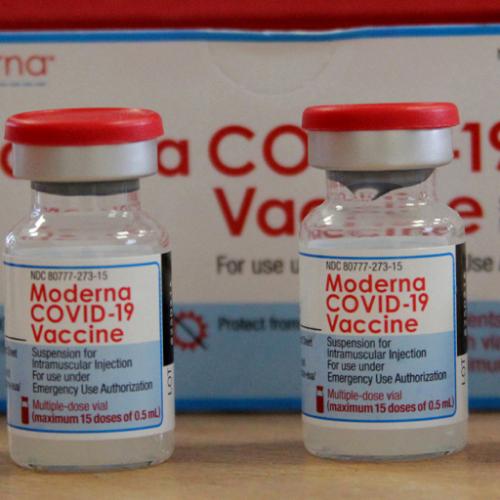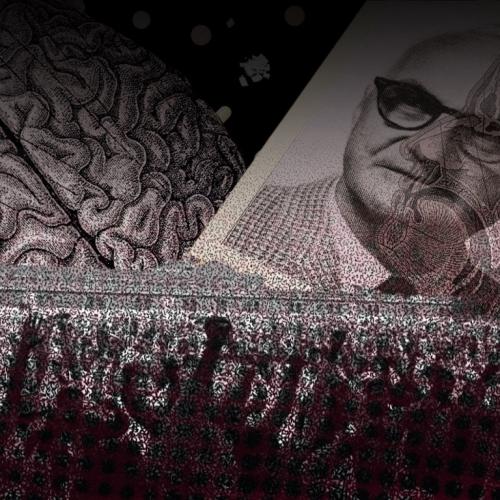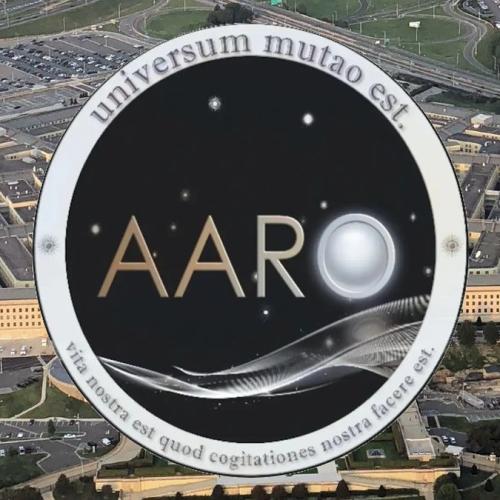Inspiring: Tech for Good News Articles
Below are key excerpts of inspiring news articles on the best of technology from reliable news media sources. If any link fails to function, a paywall blocks full access, or the article is no longer available, try these digital tools.
For further exploration, delve into our Inspiration Center.
More than 300 electric cooperatives across the United States are building their own Internet with high-speed fiber networks. These locally-owned networks are poised to do what federal and state governments and the marketplace have not accomplished. First, they are protecting open Internet access from the Internet service providers (ISPs) that stand to pocket the profits from the rollbacks of net neutrality the Trump administration announced. Second, they are making affordable and fast Internet accessible to anyone. In Detroit, for example, 40 percent of the population has no access of any kind to the Internet. Detroit residents started a grassroots movement called the Equitable Internet Initiative, through which locals have begun to build their own high-speed Internet. The initiative started by enlisting digital stewards—locals who were interested in working for the nonprofit coalition. They aim to build shared tools, like a forum and a secured emergency communication network—and to educate their communities on digital literacy. Just 30 of the more than 300 tribal reservations in the United States have Internet access. Seventeen tribal reservation communities in San Diego County have secured wireless Internet access under the Tribal Digital Village initiative. Another local effort, Co-Mo Electric Cooperative ... has organized to crowdfund the necessary resources to establish its own network. The biggest dilemma for cities is the erosion of the capacity for communities to solve their own problems. As a result, local Internet service providers are bringing the power back to their people.
Note: Explore more positive stories like this in our comprehensive inspiring news articles archive focused on solutions and bridging divides.
Last month, a small warehouse in the English city of Nottingham received the crucial final components for a project that leverages the power of used EV batteries to create a new kind of circular economy. Inside, city authorities have installed 40 two-way electric vehicle chargers that are connected to solar panels and a pioneering battery energy storage system, which will together power a number of on-site facilities and a fleet of 200 municipal vehicles. Each day Nottingham will send a combination of solar-generated energy — and whatever is left in the vehicles after the day’s use — from its storage devices into the national grid. What makes the project truly circular is the battery technology itself. Funded by the European Union’s Interreg North-West Europe Programme, the energy storage system, E-STOR, is made out of used EV batteries by the British company Connected Energy. After around a decade, an EV battery no longer provides sufficient performance for car journeys. However, they still can retain up to 80 percent of their original capacity, and with this great remaining power comes great reusability. “As the batteries degrade, they lose their usefulness for vehicles,” says Matthew Lumsden, chairman of Connected Energy. “But batteries can be used for so many other things, and to not do so results in waste and more mining of natural resources.” One study ... calculated that a second life battery system saved 450 tons of CO2 per MWh over its lifetime.
Note: Explore a treasure trove of concise summaries of incredibly inspiring news articles which will inspire you to make a difference.
Minecraft has established itself as a cultural phenomenon for many reasons: it’s creative, collaborative, and sufficiently facile as to be considered accessible to almost anybody. These benefits ... form the perfect vehicle for Reporters Without Borders’ Uncensored Library, a virtual hub housing a collection of otherwise inaccessible journalism from all over the world, with specific sections devoted to Russia, Egypt, Mexico, Saudi Arabia, and Vietnam. “In Egypt there’s no free information,” Reporters Without Borders media and public relations officer Kristin Bässe tells me. Mexico is the country where journalists are most at risk, she adds, with governmental and cartel interference often culminating in the death of those voices deemed dissident. “It’s a different form of censorship,” Bässe explains. “People don’t want to publish because they’re scared.” “In the Mexico room we built memorials to 12 Mexican journalists who have been murdered,” [said Blockworks managing director James] Delaney. Delaney tells me that the forms of censorship in Egypt are more blatant. “The articles you see in this room are actually banned,” he explains. “If you live in Egypt you’re unable to access them unless you come to our Minecraft server.” This is the case for the Russian, Vietnamese, and Saudi Arabian sections, too. “The content you find in these rooms is illegal, but we can see from the server logins that we’ve already had people from all five of these countries join and read up on this information,” he says.
Note: Explore a treasure trove of concise summaries of incredibly inspiring news articles which will inspire you to make a difference.
Entrepreneurs in Jordan have created a sophisticated machine that pulls water from the desert air at a rate that could cure the country’s water woes. 1,000 units of their flagship device have already been pre-ordered by the Jordanian government, and the success of the invention has allowed the innovators to attract dozens of promising scientists who can hopefully expand on their success and bring water resources up to speed in the relatively-stable Near Eastern nation. Aquaporo [is] a relatively straightforward, air conditioning-sized machine that can harvest 35 liters of water every day in a desert climate of 20% humidity. Aquaporo CEO Kyle Cordova and engineering director Husam Almassad got their start at Jordan’s Royal Scientific Society. Their invention looked a bit like a chest freezer. Inside, rows of nanomaterials formed into tubes and other shapes act like a sieve that filters water out of the air. The physics behind it are much the same as those found in this Classical Indian architectural feature and takes advantage of air’s tendency to speed up as it moves through a narrow passageway; called the Venturi Effect. It leaves behind the heavier water vapor, which condenses, drops into a collection apparatus, and is fed then into a reservoir. Research on the efficacy of Aquaporo’s invention shows it can achieve levels of water purity greater than Nestle brand bottled water, and collects it from the air at double the rate of existing moisture capture technology.
Note: Explore more positive stories like this in our comprehensive inspiring news articles archive focused on solutions and bridging divides.
Israel may be known as the Start-up Nation, famed for its tech start-ups that are supported by one of the largest venture-capital industries per capita in the world. But Israeli-Palestinian relations have been relentlessly grim. Initiatives like Tech2Peace are trying to bridge divides between the two communities. The student and volunteer-led programme brings Israeli and Palestinian youths together to learn tech skills - 3D and graphic design, website creation, app development - and to engage in conflict resolution dialogue. [Participant Zada] Haj says she had "zero knowledge" of animation or 3D modelling before, but by the end of the session she was able to turn her ideas into creation and develop skills that would help her get a job. Palestinian entrepreneur Adnan Awni Jaber also says Tech2Peace was the gateway for him to make Jewish friends in Israel. "I believe that technology can break walls between any two sides of the conflict because it's borderless," he tells the BBC. When [Tomer Cohen] and his Israeli and Palestinian co-founders were thinking of ways they could foster long-term partnerships between youngsters, they came up with the idea of giving them life skills that could enable them to continue working together. "We thought, OK, let's do this with technology and programming," says Mr Cohen. "When young people come to our seminar, they're not thinking, 'OK, you're Palestinian and I'm Israeli,' they're thinking, 'I want to improve my life and you want to, as well. We have something in common'."
Note: Explore a treasure trove of concise summaries of incredibly inspiring news articles which will inspire you to make a difference.
"Welcome to the Blockchain! Your voice is worth something," states a webpage of Steemit, the social network built on a blockchain that's now exploding with popularity. Steemit ... supports community building and social interaction through cryptocurrency rewards and a reputation or influence-based system, known as Steem Dollars and Steem Power. Ned Scott, CEO and co-founder of Steemit, told IBTimes: "If you think about the existing models - Facebook, Twitter, Instagram - these are platforms that invite people to come and do all this work so that their shareholders, who are not necessarily contributors make all this money. "Our platform is a cooperative version of a social network which is more intuitive, and a more shared, community-driven approach, and that's why our early user base is growing. We are completely open source." Steemit grew out of a long process set in motion by gifted developer and co-founder, Daniel Larimer. It evolved from the idea of a decentralised exchange ... to a later exploration of blockchain-based mutual aid and micro-insurance, with a forum added for users to interact and compare notes. It does away with traditional cryptocurrency barriers to entry, like having to go and buy coins at an exchange. Scott said everyone is rewarded one way or another. People who post content actually get rewarded [with Steem, a currency whose value] is split between tradability and reputation. Steem is currently the third most valuable cryptocurrency in the world.
Note: Unlike other social media platforms such as Facebook, Steemit is technically impossible to censor and is owned by everyone that uses it. Explore a treasure trove of concise summaries of incredibly inspiring news articles which will inspire you to make a difference.
Social media platforms have become an integral part of our lives, but they also pose significant challenges for our society. From spreading misinformation and hate speech to undermining democracy and privacy, social media can have negative impacts on the public good. How can we harness the power of social media for positive purposes, such as civic engagement, social justice, and education? One possible solution is to create a new kind of social media platform that is designed to serve the public interest, not the profit motive. This platform would be owned and governed by its users, who would have a say in how it operates and what content it promotes. Such a platform may sound utopian, but it is not impossible. In fact, there are already some examples of social media platforms that are trying to achieve these goals, such as Mastodon, Diaspora, and Aether. These platforms are based on the principles of decentralization, federation, and peer-to-peer communication, which allow users to have more control and autonomy over their online interactions. Civic Works ... is an emerging social networking platform that provides a more democratic, inclusive, and responsible online space for everyone. It is built on the idea that social media can be a force for good when the objective is not subverted by advertisers, marketers, or shadowy political operatives. It is a platform that inspires people to become active citizens, through civic, political, economic, and/or educational actions.
Note: The social media platform PeakD is censorship-proof and is governed by network operators who are elected by the community. Explore more positive stories like this in our comprehensive inspiring news articles archive focused on solutions and bridging divides.
New research has shown that mushroom skins could provide a biodegradable alternative to some plastics used in batteries and computer chips, making them easier to recycle. Researchers from the Johannes Kepler University in Austria were working on flexible and stretchable electronics, with a focus on sustainable materials to replace non-degradable materials, when they made their discovery, published in the journal Science Advances. “There was a fair share of serendipity involved,” Martin Kaltenbrunner ... co-author of the paper, told CNN. At the time, a member of the team had been looking at using fungus-derived materials for use in other areas. This work led to the latest study, which shows how Ganoderma lucidum mushroom skin could work as a substitute for the substrate used in electrical circuits. A substrate is the base of a circuit that insulates and cools the conductive metals sitting on top of it. Typically, they are made of non-degradable plastics, which are discarded after use. The mushroom ... forms a compact protective skin made of mycelium, a root-like network, to protect its growth medium (the wood). The skin has many properties that set it apart from other biodegradable materials, Kaltenbrunner said, “but most importantly, it can simply be grown from waste wood and does not need energy or cost intensive processing.” “Our mycelium ... can last a long time if kept dry, but in just a standard household compost, it would degrade entirely within two weeks or less,” he added.
Note: Explore a treasure trove of concise summaries of incredibly inspiring news articles which will inspire you to make a difference.
The artist, writer and technologist James Bridle begins "Ways of Being" with an uncanny discovery: a line of stakes tagged with unfathomable letters and numbers in thick marker pen. The region of [Greece] is rich in oil, we learn, and the company that won the contract to extract it from the foothills of the Pindus mountains is using "cognitive technologies" to "augment ... strategic decision making." The grid of wooden stakes left by "unmarked vans, helicopters and work crews in hi-vis jackets" are the "tooth- and claw-marks of Artificial Intelligence, at the exact point where it meets the earth." "Ways of Being" sets off on a tour of the natural world, arguing that intelligence is something that "arises ... from thinking and working together," and that "everything is intelligent." We hear of elephants, chimpanzees and dolphins who resist and subvert experiments testing their sense of self. We find redwoods communicating through underground networks. In the most extraordinary result of all, in 2014 the Australian biologist Monica Gagliano showed that mimosa plants can remember a sudden fall for a month. Ever since the Industrial Revolution, science and technology have been used to analyze, conquer and control. But "Ways of Being" argues that they can equally be used to explore and augment connection and empathy. The author cites researchers studying migration patterns with military radar and astronomers turning telescopes designed for surveillance on Earth into instruments for investigating the dark energy of the cosmos.
Note: Read a thought-provoking article featuring a video interview with artist and technologist James Bridle as he explores how technology can be used to reflect the innovative and life-enhancing capacities of non-human natural systems. For more along these lines, see concise summaries of deeply revealing news articles on mysterious nature of reality from reliable major media sources.
The sprawling, gated campus of the Energy Research Center of the Netherlands (ECN) sits on a spit of land about an hour north of Amsterdam. In a nearby control room, engineers ... were working on one of clean energys intransigent problems: how to turn waste into electricity without producing more waste. Decades ago, scientists discovered that when heated to extreme temperatures, wood and agricultural leftovers, as well as plastic and textile waste, turn into a gas composed of underlying chemical components. The resulting synthetic gas, or syngas, can be harnessed as a power source, generating heat or electricity. But gasified waste has serious shortcomings: it contains tars, which clog engines and disrupt catalysts, breaking machinery, and in turn, lowering efficiency and raising costs. This is what the Dutch technology is designed to fix. The MILENA-OLGA system, as they call it, is a revolutionary carbon-neutral energy plant that turns waste into electricity with little or no harmful byproducts. The MILENA-OLGA process ... is 11 percent more efficient than most existing energy-from-waste plants and over 50 percent more efficient than incinerators of a comparable scale. The process also emits zero wastewater and produces no particulates or other pollutants. Just 4 percent of the original material is left over as inert white ash, which can be used to make cement.
Note: A similar technology was developed and implemented over 10 years ago, as detailed in this Popular Science article. Why wasn't this amazing invention widely reported and used? Explore a treasure trove of concise summaries of incredibly inspiring news articles which will inspire you to make a difference.
Virtual reality can help act as a do-it-yourself therapist, helping people overcome their fear of heights without a professional at their side, British researchers reported. A half dozen virtual reality sessions over two weeks significantly reduced the fear of heights for more than two-thirds of people who tried it, the team at the University of Oxford reported. Some even ventured onto rope bridges and mountainsides. The outcome results are brilliant. They are better than I expected, [said] Daniel Freeman, the University of Oxford clinical psychologist who led the study team. The team tested 100 volunteers, 49 of whom were given six virtual reality sessions over two weeks. The rest got no treatment. On average, the volunteers had been afraid of heights for 30 years. After six weeks, those who got no treatment remained just as afraid of heights as they had always been. But 34 of the 49 volunteers who did the virtual reality found they were no longer afraid of heights. Real-life exposure to heights has verified this. Afterwards, people even found they could go to places that they wouldnt have imagined possible, such as walk up a steep mountain, go with their children on a rope bridge, or simply use an escalator in a shopping center without fear, [Freeman said]. The software can be whimsical, offering scenarios from walking across a virtual rope bridge to rescuing a cat from a limb. Freeman said the experiences are meant to strongly immerse people in a sensation of height and then encourage them to challenge their reluctance to take part.
Note: Read another inspiring article showing how virtual reality is helping patients deal with many different fears and phobias. Explore a treasure trove of concise summaries of incredibly inspiring news articles which will inspire you to make a difference.
Four teenage African girls have come up with a urine-powered generator ... which they claim generates one hour of electricity from one liter (about a quart) of urine. The pee-powered product made its debut at Maker Faire Africa in Lagos, Nigeria. Urine is put into an electrolytic cell, which separates out the hydrogen. The gas cylinder pushes hydrogen into a cylinder of liquid borax, which is used to remove the moisture from the hydrogen gas. This purified hydrogen gas is pushed into the generator. The girls will probably be famous chemists one day, in any case, but they aren't the first to propose urine (or more solid human and animal waste) as a possible alternative fuel. Last year, in one example, researchers from Ohio University came up with their own technology for extracting hydrogen from urine. Doing so, they say, requires less power than plucking it from water, as hydrogen can be separated more easily from the ammonia and urea chemical compounds present in pee. The four African teens likely are the youngest researchers yet to dabble in pee as power. Skepticism aside, can we all just agree that the foursome should be lauded for their efforts to find alternative power sources on a continent that could really use them?
Note: For a treasure trove of great news articles which will inspire you to make a difference, click here.
When a Manhattan parking garage collapsed in April this year, rescuers were reluctant to stay in the damaged building, fearing further danger. So they used a combination of flying drones and a doglike walking robot to inspect the damage, look for survivors and make sure the site was safe for human rescuers to return. Soon, rescuers may be able to call on a much more sophisticated robotic search-and-rescue response. Researchers are developing teams of flying, walking and rolling robots that can cooperate to explore areas that no one robot could navigate on its own. And they are giving robots the ability to communicate with one another and make many of their own decisions independent of their human controller. Such teams of robots could be useful in other challenging environments like caves or mines where it can be difficult for rescuers to find and reach survivors. In cities, collapsed buildings and underground sites such as subways or utility tunnels often have hazardous areas where human rescuers can’t be sure of the dangers. As robots become better, teams of them may one day be able to go into a hazardous disaster site, locate survivors and report back to their human operators with a minimum of supervision. “More work ... needs to be done,” [roboticist Viktor] Orekhov says. “But at the same time, we’ve seen the ability of the teams advanced so rapidly that even now, with their current capabilities, they’re able to make a significant difference in real-life environments.”
Note: Explore more positive stories like this in our comprehensive inspiring news articles archive focused on solutions and bridging divides.
The recent launch of a new mobile phone service introduced significant new privacy protections into the mobile phone system. This exciting new approach highlights the failure of the existing mobile phone infrastructure to protect privacy, and points the way forward for a wide variety of technologies. Today’s cellphones are generally a privacy disaster. Partly that’s the result of the two companies that control the operating system software on the vast majority of the world’s pocket computers. In order for your carrier to route calls and data to your phone, the network needs to constantly know which cell tower your phone is near. And when you make a call or use data, the provider can see where that traffic is going. Cell carriers track and store this accidental byproduct of the technology in order to record people’s location history and network activity for marketing purposes and, in certain circumstances, for sharing with law enforcement. The new phone service, called Pretty Good Phone Privacy (PGPP), uses encryption techniques to deliberately blind itself so that it can’t know that the user of a mobile device is you, or what data you are sending from that phone. You connect to the PGPP service for payment, and that’s all. With PGPP’s approach, the carrier simply does not have the data to turn over to anyone. It cannot be sold, leaked, or hacked, let alone offered to overreaching law enforcement agencies. Verizon, T-Mobile, AT&T, and their smaller competitors could be offering such a privacy-protecting service, but don’t want to.
Note: Explore a treasure trove of concise summaries of incredibly inspiring news articles which will inspire you to make a difference.
A study published in Nature in February 2020 entitled “Power generation from ambient humidity using protein nanowires” discovered an interesting way to harvest energy from the environment, creating the potential for another clean power generating system that is self-sustaining. According to the authors, “Thin-film devices made from nanometre-scale protein wires harvested from the microbe Geobacter sulfurreducens can generate continuous electric power in the ambient environment. The devices produce a sustained voltage of around 0.5 volts across a 7-micrometre-thick film, with a current density of around 17 microamperes per square centimetre. We find the driving force behind this energy generation to be a self-maintained moisture gradient that forms within the film when the film is exposed to the humidity that is naturally present in air.” The study also mentions that “connecting several devices linearly scales up the voltage and current to power electronics” and that their results “demonstrate the feasibility of a continuous energy-harvesting strategy that is less restricted by location or environmental conditions than other sustainable approaches.” One of the electrical engineers, Jun Yao, from the University of Massachusetts Amherst, stated that they are “literally making electricity out of thin air.” They are calling it the “Air-gen” and it generates clean energy 24/7, thanks to the electrically conductive protein nanowires produced by Geobacter.
Note: As the article states, why do none of the truly "free" energy sources we keep hearing about never come to market? Explore a treasure trove of concise summaries of incredibly inspiring news articles which will inspire you to make a difference.
Researchers have discovered how to use cyanobacteria—commonly called blue-green algae—to continuously power a microprocessor for a span of more than six months. The system, which uses inexpensive and largely recyclable materials, contains a type of non-toxic photosynthetic algae called Synechocystis, per a statement. The research was published in the journal Energy & Environmental Science. “We were impressed by how consistently the system worked over a long period of time—we thought it might stop after a few weeks but it just kept going,” says Paolo Bombelli, a researcher from the University of Cambridge’s Department of Biochemistry and lead author of the paper. The scientists created an enclosure out of aluminum and clear plastic and put the bacteria inside it. The device, which is about the size of a AA battery, was placed on a windowsill in Bombelli’s home during Covid-19 lockdown in 2021 and remained there from February to August. The bacteria powered an Arm Cortex M0+ processor—a microprocessor widely used in the network of appliances connected to the internet, also called the Internet of Things (IoT). The cyanobacteria produced energy even without light, perhaps because they process some of their food in the dark, which generates an electrical current. Several billion IoT devices already exist, and that number is expected to rise to one trillion by 2035. Powering all those devices would require 109,000 tons of lithium, which is three times more than what the world produced in 2017.
Note: Explore a treasure trove of concise summaries of incredibly inspiring news articles which will inspire you to make a difference.
A solar project funded and operated by both Jews and Muslims is shining some light on Auja, a small Palestinian town located in one of the most controversial territories on Earth. The $100,000 project is harnessing solar energy to power the drawing of water from deep underground to irrigate a grove of palms growing the prized Medjool dates. It is the first large project to be funded by both Jews and Muslims in the United States including former New York City Mayor Michael R. Bloomberg and to be operated by Israeli Jews and Palestinian Muslims on the ground. The solar array is providing an economic boost to 45 farming families in this town of 5,000 Palestinians on the eastern flank of the West Bank who struggle with scarce water and unreliable and expensive electricity. Ben Jablonski ... is leading the project through a nonprofit he founded called Build Israel Palestine. Mr. Jablonski, who is Jewish, started the organization in 2014 with Tarek Elgawhary, an Egyptian Muslim religious scholar in Washington, D.C. who also runs Coexist, an educational nonprofit. Jablonski gave up his board seat with the Jewish National Fund, a nonprofit infrastructure developer that has limited but controversial involvement in West Bank settlements, in order to meet the demands from the Auja community, which insisted that donors and engineers involved in the project have no connections to Israeli settlements. Build Israel Palestines work focuses on providing Palestinians access to water, and doing so by bringing Muslims and Jews together.
Note: Explore a treasure trove of concise summaries of incredibly inspiring news articles which will inspire you to make a difference.
Technology promised to connect us but divided us instead. As people worry about smartphone addiction and vow to spend less time on their laptops, social media companies are scrambling to placate a world that has caught on to their products ability to turn us against one another, tip elections and even incite violence. The growing anxiety about technology has prompted a humane technology movement among former Silicon Valley insiders disquieted by what their industry has wrought. But theres another group, utterly unconnected to Google or Facebook or Apple, that has been practicing humane technology for generations: the Amish. Each church community of about 30 families ... has latitude in setting its technology boundaries. When a church member asks to use a new technology, the families discuss the idea and vote to accept or reject. The conversation centers on how a device will strengthen or weaken relationships within the community and within families. Imagine if the United States had conducted a similar discussion when social media platforms were developing algorithms designed to amplify differences and then pit us against one another, because anger drives traffic and traffic drives profits. Americans will never abandon technology for a horse-and-buggy life, but millions of us have begun weighing the costs of constant connectivity. When pondering how to strike the right balance, we might do well at least to pause and consider taking a personal version of the Amish approach.
Note: Explore a treasure trove of concise summaries of incredibly inspiring news articles which will inspire you to make a difference.
Using the power of ocean waves, innovators from Boston, U.S., have developed a technology that can produce fresh water off-grid and without the costly infrastructure of desalination plants. This invention could help many of the 2.1 billion people around the world who struggle to access safe drinking water, most of those in low-income countries. The technology, Wave2O, was developed by start-up company Resolute Marine Energy. Chief Operating Officer Olivier Ceberio says it targets off-grid coastal communities in developing nations where a solution to persistent water shortages is urgently needed. Importantly, it fills a gaping hole between industrial-scale utilities that are costly and time-consuming to build, and micro-scale solutions for individual households. The only technology currently offered in between involves diesel-powered desalination systems. And Wave2O can be delivered competitively because it uses free energy from a consistent and inexhaustible renewable energy resource: ocean waves, says Ceberio. By eliminating the need for diesel generators, the invention not only saves money but reduces carbon dioxide emissions. Each 4,000 [cubic meter per] day plant that displaces an equivalently sized diesel-powered plant will cut CO2 emissions by 4,300 tons per year, explains Ceberio, the equivalent of taking 936 cars off the road or of the carbon sequestered by 2,070 hectares of forest.
Note: Explore a treasure trove of concise summaries of incredibly inspiring news articles which will inspire you to make a difference.
A miraculous device that can generate electricity seemingly out of thin air has been developed by engineers. Called a thermal resonator, it relies on fluctuations in temperature between day and night to produce electricity. It can be used without the need for sunlight, batteries or wind, making it ideal for situations where these resources can't be relied upon. The technology has the potential to power sensors and communications devices for years without the need for batteries. Experts at the Massachusetts Institute of Technology's (MIT) department of chemical engineering are behind the find. Their gadget is a twist on a thermoelectric generator, which creates power when one side of the device is a different temperature from the other. Researchers say that the power levels generated by the new system so far are modest. However, it outperformed a commercially available pyroelectric material - an existing method for converting temperature fluctuations to electricity - by 300 per cent. Professor Michael Strano, who led the study, said: 'We basically invented this concept out of whole cloth. 'It's something that can sit on a desk and generate energy out of what seems like nothing. 'We are surrounded by temperature fluctuations of all different frequencies all of the time. These are an untapped source of energy.' Such systems could provide low-power but long-lasting energy sources for landers or rovers exploring remote locations, including other moons and planets, says Volodymyr Koman, an MIT postdoc and co-author of the new study.
Note: For more, see this article on the MIT website.
Important Note: Explore our full index to revealing excerpts of key major media news articles on several dozen engaging topics. And don't miss amazing excerpts from 20 of the most revealing news articles ever published.








